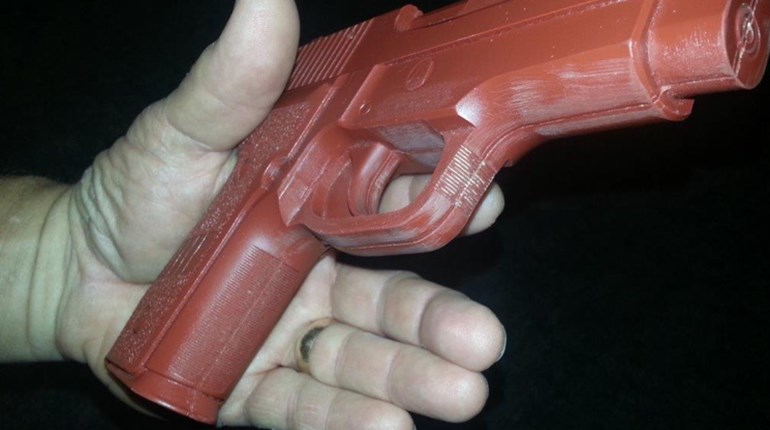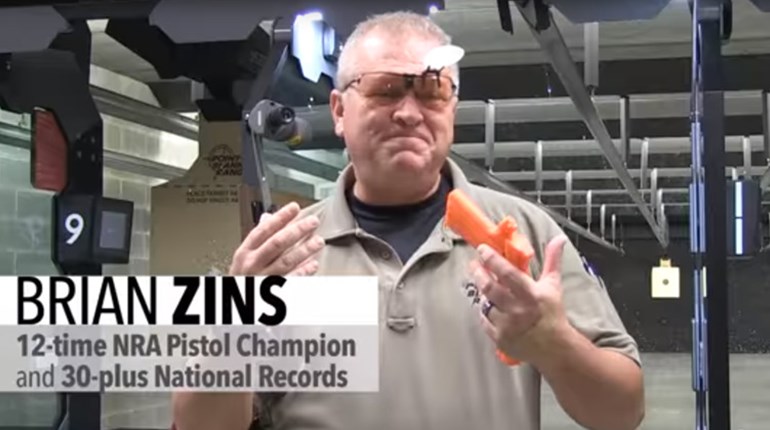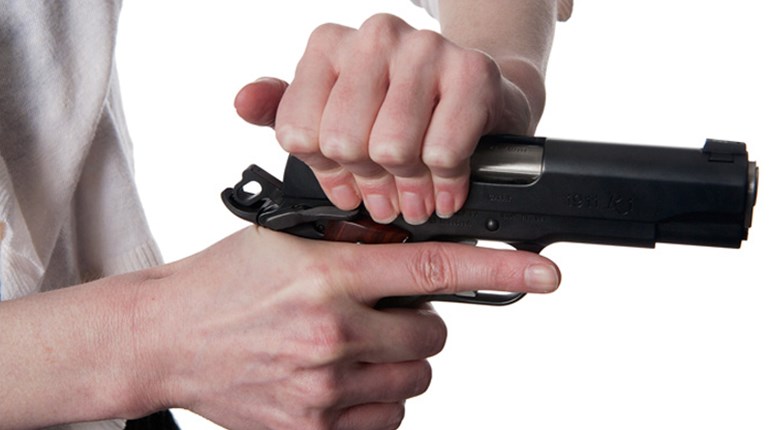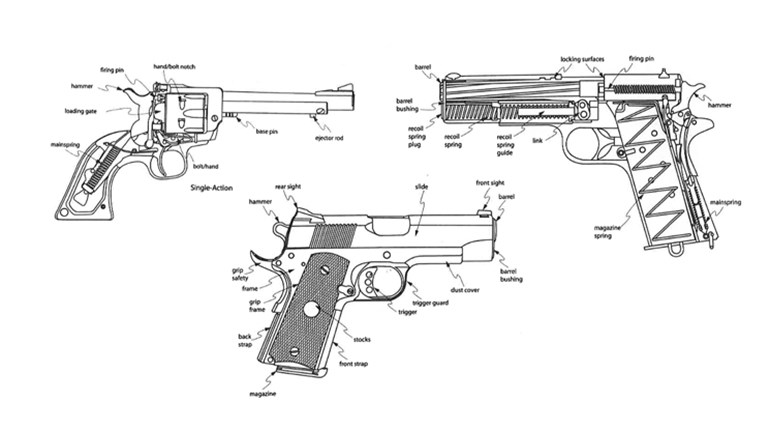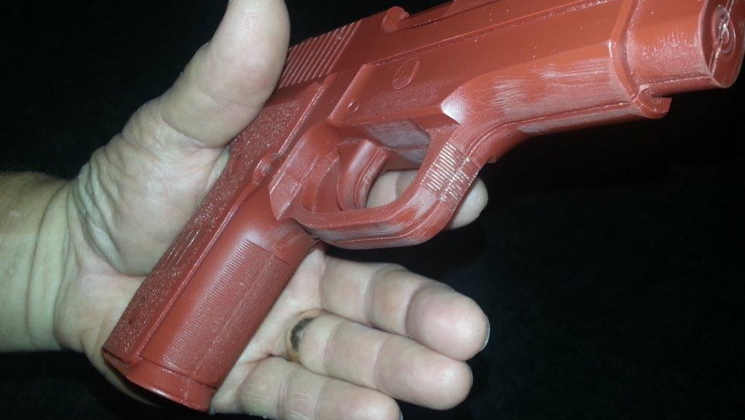
An effective grip lets us squeeze the trigger without moving the sights. A steady grip will also help with a natural point of aim-one that doesn't require constant "tweaking" to keep the sights aligned. The best way to check your grip is with dry-firing practice, after double-checking that the gun is unloaded.
Focus on the right thing: The most important part of your trigger squeeze during dry-fire practice is at the instant the gun fires. We're hard-wired to blink and/or jerk the trigger in anticipation of the noise, so dry-firing a few minutes each day helps develop muscle memory that can override this natural instinct. Like a slow motion camera, focus on what's happening during the last split second before the gun fires. If you don't see the sights, then hitting the target becomes a game of chance.
Grip Adjustment: If your sights jump to one side during dry-fire practice, try repositioning the tip of your trigger finger left or right on the trigger to achieve a straight line squeeze. Another way you might need to tune your grip is to reposition the backstrap for a natural point of aim. For me, the backstrap lies along the "life line" of my palm, as in the photo.
How hard should you grip? Err on the hard side so that the trigger pull doesn't move the gun. Most of the pros use a very firm grip, particularly to steady the gun during rapid fire. Putting a "death grip" on the gun may cause tremors or cause your hand to go to sleep, so strive for a happy medium.













